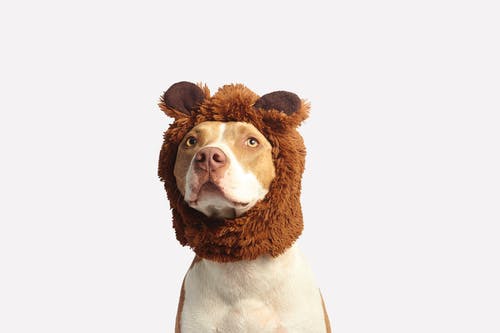Have you ever noticed your furry companion breathing a bit more heavily than usual? It might be after a rigorous game of fetch, or you could observe it while they’re resting. Labored breathing in pets, known medically as dyspnea, can sometimes be confused with normal panting. However, it’s crucial to distinguish between the two because labored breathing may signal underlying health issues.
In this article, we’ll explore what labored breathing in pets might mean, when it’s time to worry, and what steps you should take to ensure the well-being of your four-legged family members.
Recognizing Labored Breathing
In our pets, normal breathing should be smooth and relatively effortless. But what does it look like when it’s not?
Labored breathing can present as:
-
Increased effort: You may notice the abdomen or chest moving more than usual.
-
Increased noise: Breathing might be louder, or you may hear wheezing or crackling sounds.
-
Changes in gum color: Instead of a healthy pink, gums might appear blue or gray, indicating a lack of oxygen.
-
A change in posture: Your pet may extend their head and neck out or assume a sphinx-like position to breathe easier.
It’s a clear sign something’s up when our pets exhibit these symptoms, and if you’re seeing any of them, it might be a cue to delve deeper into what’s happening with your pet’s health.
Possible Causes of Labored Breathing
Several conditions might be the culprits behind your pet’s difficulty in breathing.
Respiratory Issues
Below are some conditions related to the respiratory system:
-
Asthma or allergic reactions
-
Bronchitis or pneumonia
-
Foreign objects inhaled into the respiratory tract
-
Lung tumors or diseases
Cardiac Concerns
The heart can also be a factor in labored breathing:
-
Heart failure, which can lead to fluid buildup in or around the lungs
-
Cardiomyopathy is a disease of the heart muscle
-
Heartworm disease
Other Health Conditions
And there are other non-respiratory conditions to consider:
-
Anemia or blood loss
-
Pain or discomfort from another condition or injury
-
Obesity puts extra strain on the respiratory system and heart
For more detailed information on each condition, as well as guidance on what steps to take next, refer to the resources and insights on this page.
When to See the Vet
Breathing difficulties in pets are not to be taken lightly, and they often warrant swift veterinary attention. But how do you know it’s time to hustle over to the vet, or in more severe cases, an emergency vet in Rock Hill, SC? Here are some telltale signs:
-
Persistent coughing or choking
-
Breathlessness that doesn’t resolve even with rest
-
Any disturbances in consciousness or fainting spells
-
Bluish-tinged gums
-
Extreme restlessness or anxiety
-
Open-mouth breathing in cats (which is highly unusual)
If you’re observing any of these red flags, your pet must be examined by a professional as soon as possible. Sometimes, these symptoms indicate an emergency that requires immediate treatment to save your pet’s life.
Diagnosing the Underlying Problem
Once you’ve arrived at the vet, what happens next? Your vet will perform a thorough physical examination and ask about your pet’s medical history and the onset of symptoms. To get to the bottom of the issue, your vet may suggest a pet ultrasound in Rock Hill, SC. This non-invasive test can give critical insight into the state of your pet’s internal organs, including the lungs and heart.
Additional Diagnostic Tools
Veterinarians have a range of tools at their disposal to diagnose breathing difficulties:
-
Blood tests to check for infections, inflammation, anemia, or other organ functions
-
Chest X-rays or radiographs to look for lung and heart abnormalities
-
Endoscopy to inspect the respiratory tract more closely
-
Bronchoalveolar lavage to collect samples from the lungs
-
Electrocardiogram (ECG) to assess the heart’s electrical activity
With the information gathered, your vet can paint a clearer picture of what’s causing your pet’s breathing troubles and how to treat it.
Common Treatments
Treatments for labored breathing depend on the root cause, but they may include:
-
Oxygen therapy for immediate relief
-
Medications like bronchodilators, anti-inflammatories, or antibiotics
-
Drainage of any fluid from around the lungs
-
Adjustments in diet or activity if obesity is a factor
-
Management of chronic conditions like heart disease
Along with these treatments, your vet will provide specific instructions tailored to your pet’s condition and needs.
Prevention and Ongoing Care
While we can’t prevent every instance of labored breathing, there are steps we can take to keep our pets as healthy as possible:
-
Regular vet check-ups to catch any potential health issues early
-
Maintaining a healthy weight and active lifestyle
-
Monitoring for any unusual symptoms or behaviors
-
Protecting them from environmental hazards like toxins and allergens
-
Consistent parasite prevention, particularly against heartworm
Leading a proactive lifestyle with your pet can minimize the risk of respiratory distress and other health complications.
The Bottom Line
Our pets rely on us to interpret their behaviors and symptoms, and when it comes to labored breathing, understanding what we’re seeing and acting promptly could make all the difference. Be attentive to your pet’s breathing and know the signs of distress.
Last thoughts on this topic? Seeing your pet in distress is never easy, but you’re not alone. Veterinary professionals are your allies, and with their expertise, along with your vigilant care, you’re equipped to give your pet the loving support they need.







